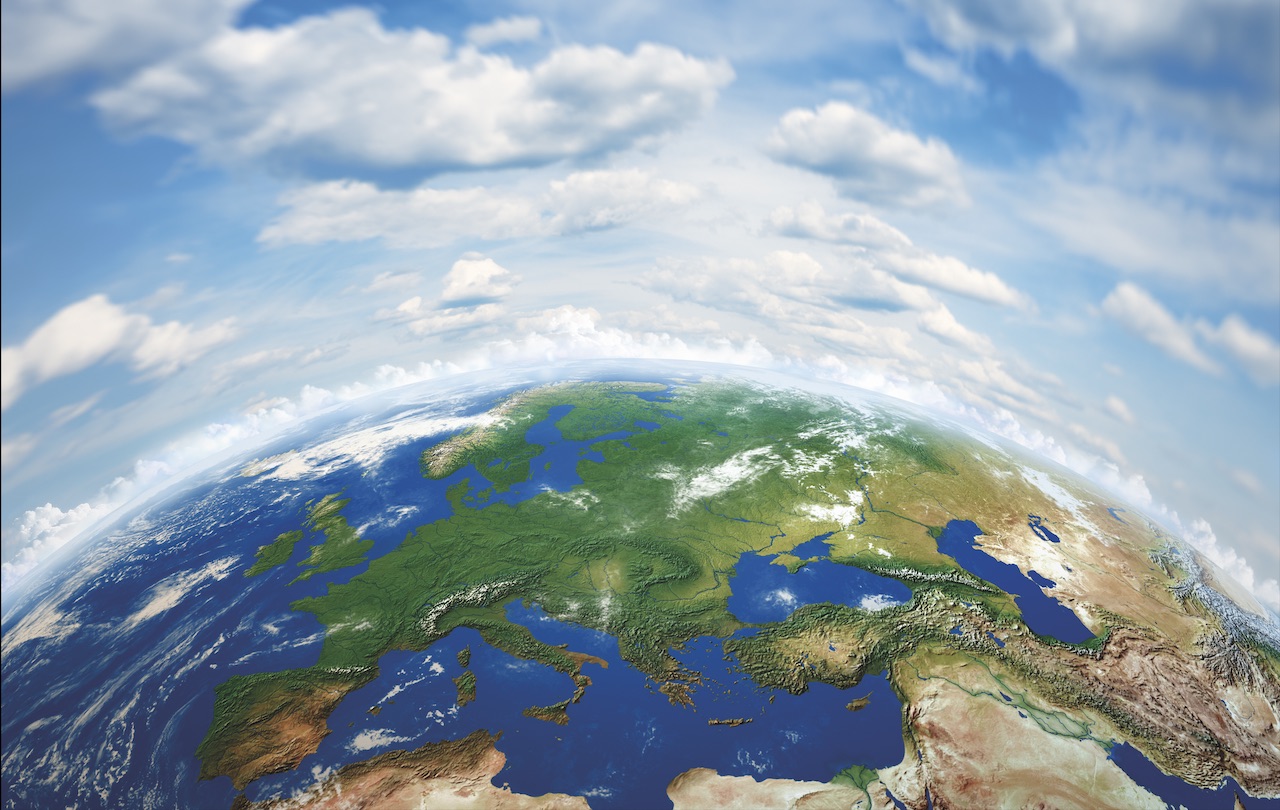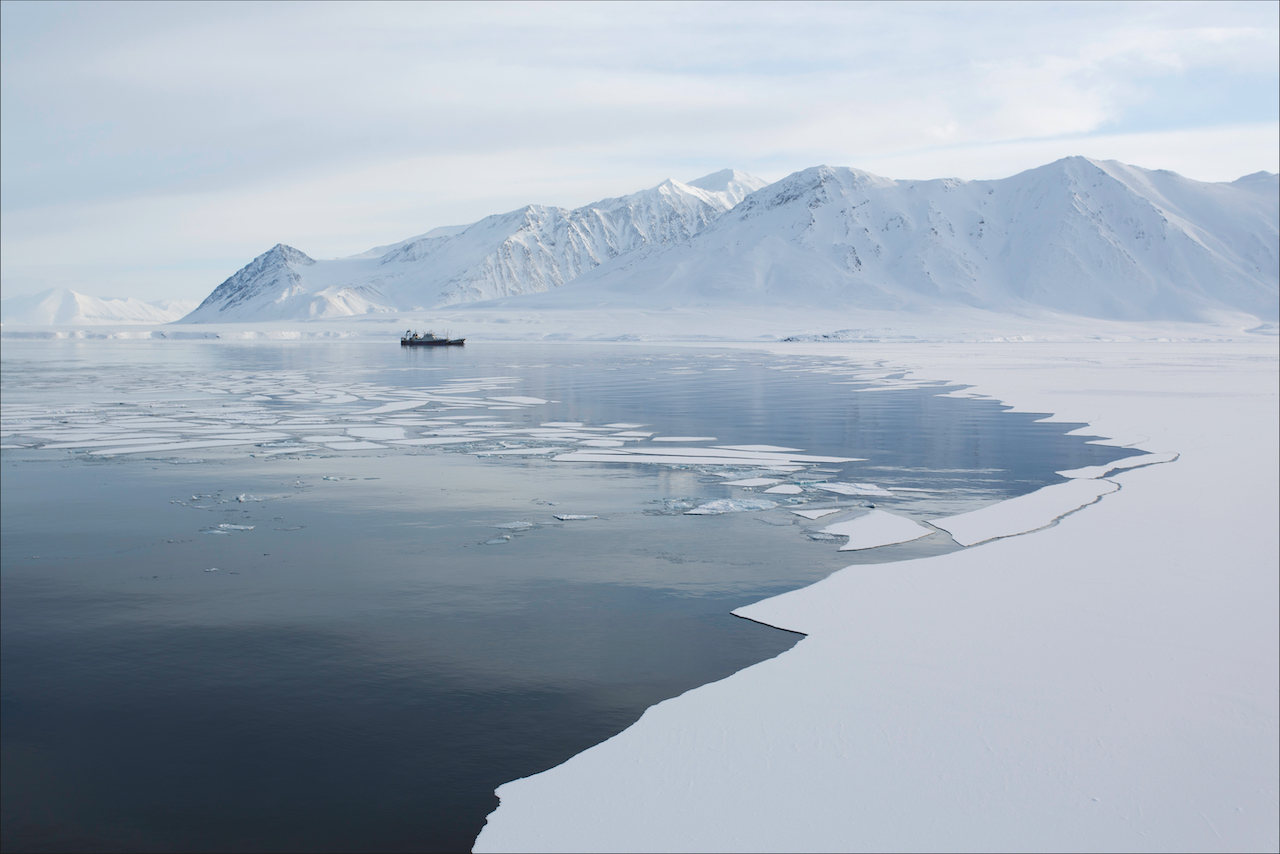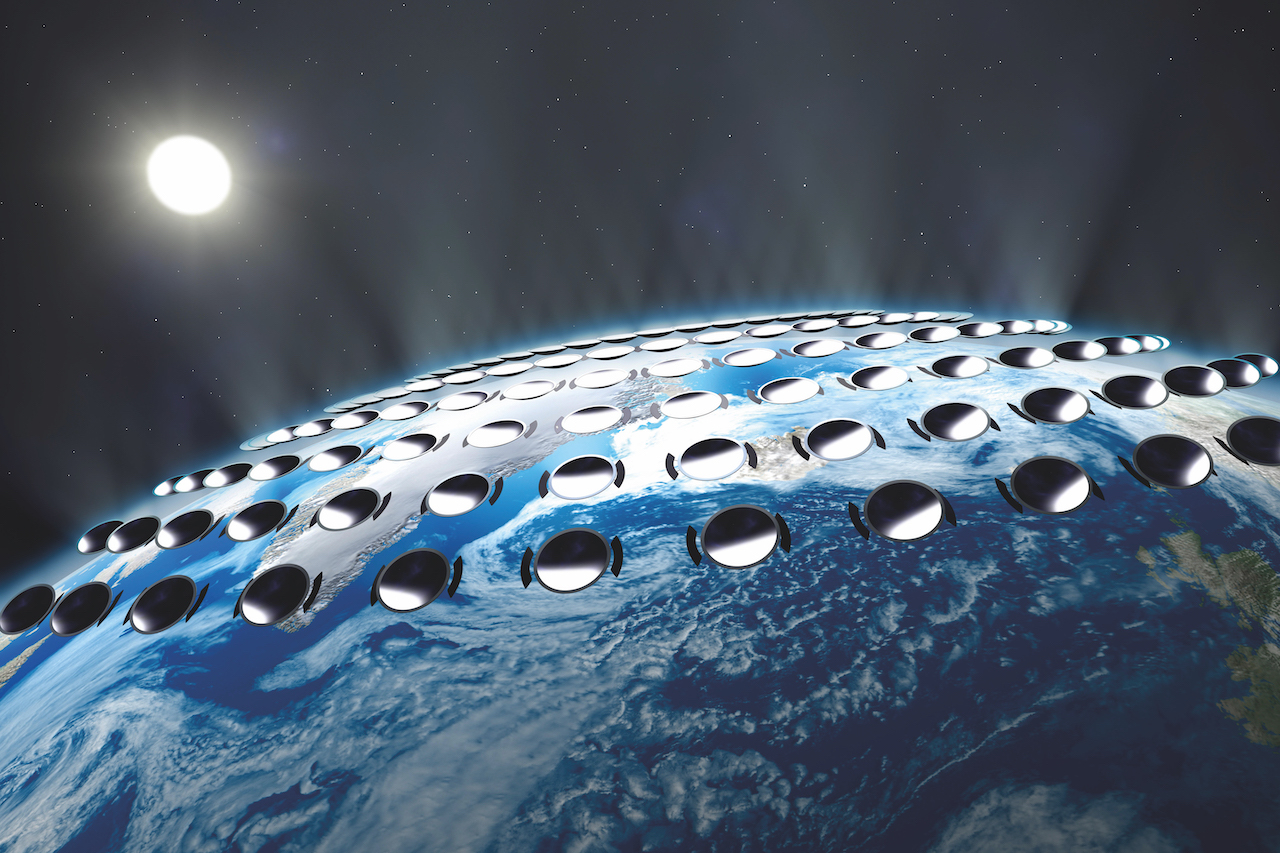Geoengineering: Can we control the weather?
Explore how existing and future geoengineering technologies could help humans to manipulate the climate

Geoengineering is the term used to describe the manipulation of weather to combat the effects of global warming, according to the Oxford Geoengineering Programme. These methods are generally split into two categories — carbon dioxide removal and solar geoengineering.
Removing greenhouse gases from the atmosphere helps to prevent the sun’s warmth being trapped in Earth’s lower atmosphere and reduce ocean acidification. Meanwhile solar geoengineering is an attempt to reflect sunlight back into space. Here are some of the proposed and existing geoengineering processes, designed to alter the climate.
Should we control the weather?
It may be the topic of daily small talk, but the weather and its changing states has a big impact on individuals, localized areas and the planet as a whole. In some countries prolonged drought creates harsh, dry conditions, while others are constantly threatened by surges of floodwater. Severe weather varies drastically from country to country, but according to the United Nations, one change in climate is common worldwide — global temperatures continue to steadily increase.
As modern technology advances and our understanding of meteorological processes grows, scientists are discovering new ways to control the weather. Instead of succumbing to nature's schedule, projects are in place to make the skies rain, remove carbon dioxide from the atmosphere and prevent extreme weather events such as hurricanes and flooding.
Related: Can we stop Earth from heating up?
While sometimes it may be simply convenient to manipulate the weather, it may also at times be essential. The goal of geoengineering is to protect the planet. However, some scientists believe humans shouldn't play with environment, according to Nature. The outcome may appear positive when analyzed in theory, and with the knowledge we possess, but what about the consequences we are unaware of? As humans, we have played a significant role in climate change, and many believe that in order to control the weather for the better we should focus on naturally reversing our actions. This includes using less fossil fuels and preserving plant life.
Cloud seeding and its origins

Cloud seeding is a method used to make clouds rain. Using aircraft, drones or rockets, small particles of silver or lead iodide are released into the sky. Because these particles have a similar structure to ice, the water droplets in the cloud–which are too small to fall as rain– surround the silver iodide, according to Encyclopaedia Britannica. As the water and silver iodide combine, ice crystals form. Eventually, the ice crystals become too heavy to remain in the air. As they fall, they melt to become raindrops.
Get the world’s most fascinating discoveries delivered straight to your inbox.
In 1974, during the Vietnam War, the U.S. army used cloud seeding to alter the weather. The aim was to prolong the monsoon season in Vietnam, making fighting more difficult for the enemy. The plan was named Operation Popeye and meant that the U.S. troops were more prepared for the extensive rainy season, according to documents posted online at the Office of the Historian. Operation Popeye used the rain as a weapon to destroy roads and flood rivers.
To do this, military pilots flew over chosen regions with canisters of silver or lead iodide. The canisters were ignited to release the particles into the clouds. When the events of Operation Popeye were publicized, a ban was put in place by the European Modification Convention to prevent military tactics that controlled the weather.
In 2008, China used its weather-modification programme to control weather forecasts for the Beijing Olympics, according to the BBC. The country carried out cloud-seeding in the capital, to ensure that the rain fell before events like the opening ceremony, rather than during them.
Marine geoengineering
1. Cloud-whitening towers
The color of a cloud depends on its particle size and composition. Bright white clouds can be pleasing to the eye, but they also hold another useful property — they can reflect sunlight back into space, along with the heat energy it carries. This is the idea behind cloud-whitening towers, which would aim to brighten clouds in order to reduce the warming of the planet, according to the BBC.
The towers would be constructed on a fleet of autonomous boats, floating on the ocean surface. Water would then be pumped from the sea and sprayed into the sky through these towers. This fine spray of seawater would reduce the average droplet size within the surrounding clouds. The small droplets in the clouds scatter light, making clouds appear white, and in turn these white clouds would reflect more sunlight away from Earth.
2. Iceberg builders

Melting Arctic ice is often associated with global warming . There are many indirect actions we can take to reduce warming weather patterns, but what if we could use machines to physically piece the Arctic back together? A group of Indonesian scientists, led by architect Faris Rajak Kotahatuhaha, have designed an iceberg-making submarine, as part of the ASA Experimental Design Competition.
These vessels would first submerge themselves underwater so that their hexagonal centre becomes filled with water. Next the salt is filtered from this contained water. This step is essential as removing salt from sea water raises its freezing point. The water is concealed, so that it isn't warmed by sunlight, enabling it to naturally freeze.
Around a month later, the ice would eject from the vessel as a 16-foot (five-meter) wide, 82-foot (25 meter) deep hexagonal iceberg. This shape was chosen to increase the possibility of two ice blocks merging together.
3. Ocean fertilization
Ocean fertilization is a process by which carbon dioxide from the atmosphere is transported to the bottom of the ocean. While humans can initiate this process, ocean fertilization relies on the activity of phytoplankton, according to The Royal Society. This proposed plan has been assessed in many experiments, but some scientists are concerned about the large-scale use of this method and its ability to significantly alter ocean ecosystems at different depths.
First, boats are used to release large amounts of iron into the ocean. Because microscopic marine algae, called phytoplankton, need iron to produce food and grow, adding iron creates algal blooms.
The Phytoplankton absorb carbon dioxide from the atmosphere and release oxygen. Then, when phytoplankton eventually dies, it sinks below the surface and carries the absorbed carbon with it. Carbon that is carried into the deep ocean can remain out of the atmosphere for over one hundred years.
4. Artificial upwelling
This process involves transporting deep ocean water up towards shallower water, by pumping it through large artificial tubes. As a result of this process, colder and nutrient-rich water is dispersed near the surface, according to the Journal of Atmospheric and Oceanic Technology. In some instances, upwelling has caused air temperatures to drop as the colder surface water absorbs more heat from the atmosphere.
While this would temporarily alter the weather, research suggests that the upwelling system would have to remain on indefinitely. Otherwise, the absorbed heat would be released and create a reversed, warming effect.
Geoengineering in space

Geoengineering projects are all created to change Earth's climate. But, they are not all designed to function on our planet. Space geoengineering involves taking a large step back from Earth, in an attempt to make more significant alterations. Entering into space means being closer to the sun, and so much of the geoengineering technology envisaged for Earth's orbit involves manipulating the sunlight that illuminates our planet.
The first idea for this form of space-based technology came from engineer James Early in 1989. His concept involved building a giant glass sheet of 1,242 miles (2,000 kilometres) in width, according to the British Interplanetary Society. When orbiting Earth, this glass structure would serve as a barrier between the sun and Earth, reflecting sunlight back into space and reducing the radiation that entered Earth's atmosphere. This substantially sized, solid structure would be incredibly expensive to fly to space and would likely need to be assembled in space. In space assembly technology is something that is currently being experimented with, according to the Chinese Journal of Aeronautics.
As we have no long-term human presence on another planetary body, some of today's scientists have envisaged a more manageable array of smaller mirror satellites and areas of dense asteroid dust to serve as a solar barrier, according to Space.com.
To block and deflect light away from Earth, equipment needs to remain in a controlled location. The most commonly proposed area to deploy such a system is at the L1 Lagrange point. This point, between the sun and Earth is where the gravity of the two objects is equal and limited energy is needed to keep a satellite in position, according to NASA.
With a location planned and multiple ideas in process, why have these concepts not yet materialized into real-life systems? Currently, the one factor that could make space geoengineering so successful is also the one that could create the greatest failure — the scale. In contrast to choosing an aspect of the weather to change on Earth, which enables precise changes to be made, altering the weather from space focuses on the entire planet.
These large-scale adjustments can't be properly tested until the mission is launched for real. And nobody can know for sure how the planet would respond to a sudden cooling and reduction in light.
Additional resources and reading
Further proposed geoengineering technology can be found at the Oxford Geoengineering Programme website. For more information about geoengineering in space, NASA has answered 5 common questions about hacking the planet.
Bibliography
Scott, D. Geoengineering and Environmental Ethics. Nature (2012). https://www.nature.com/scitable/knowledge/library/geoengineering-and-environmental-ethics-80061230/
Weather Modification in North Vietnam and Laos (Project Popeye) (1967). https://history.state.gov/historicaldocuments/frus1964-68v28/d274
Oxford Geoengineering Programme, "What is Geoengineering" http://www.geoengineering.ox.ac.uk
"Ocean fertilization: a potential means of geoengineering?", Philosophical Transactions of The Royal Society A (2008). https://royalsocietypublishing.org/doi/10.1098/rsta.2008.0139
"A Sea Trial of Air-Lift Concept Artificial Upwelling in the East China Sea". Journal of Atmospheric and Oceanic technology (2019). https://journals.ametsoc.org
"Review of in-space assembly technologies". Chinese Journal of Aeronautics (2021). https://www.sciencedirect.com/science/article/pii/S1000936120304854

Ailsa is a staff writer for How It Works magazine, where she writes science, technology, history, space and environment features. Based in the U.K., she graduated from the University of Stirling with a BA (Hons) journalism degree. Previously, Ailsa has written for Cardiff Times magazine, Psychology Now and numerous science bookazines. Ailsa's interest in the environment also lies outside of writing, as she has worked alongside Operation Wallacea conducting rainforest and ocean conservation research.


